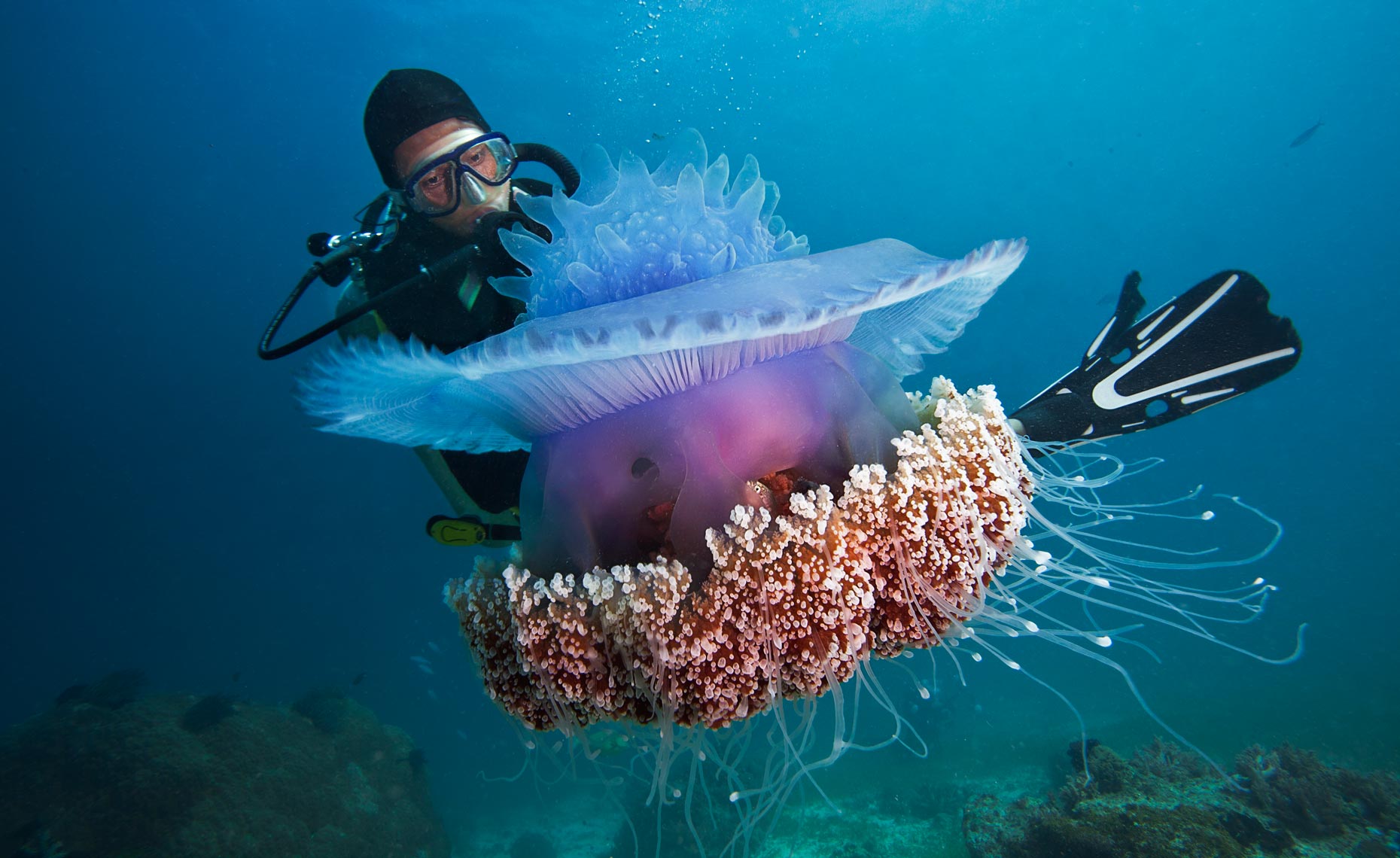Jellyfish symptoms. Jellyfish Sting: Symptoms, Treatments, and Prevention Strategies
What are the common symptoms of a jellyfish sting. How can you treat a jellyfish sting effectively. What precautions can you take to avoid jellyfish encounters. Are there any misconceptions about jellyfish sting treatments. How do different jellyfish species affect sting severity.
Understanding Jellyfish and Their Stings
Jellyfish are fascinating marine creatures found in oceans worldwide. These gelatinous animals possess tentacles that contain venomous cells, which they use for self-defense and capturing prey. When humans come into contact with these tentacles, it results in what we commonly refer to as a jellyfish sting.
The severity of a jellyfish sting can vary greatly depending on the species involved. While some stings may cause only mild discomfort, others can be life-threatening. In North America’s Chesapeake Bay alone, over 500,000 people experience jellyfish stings annually, highlighting the prevalence of these encounters.
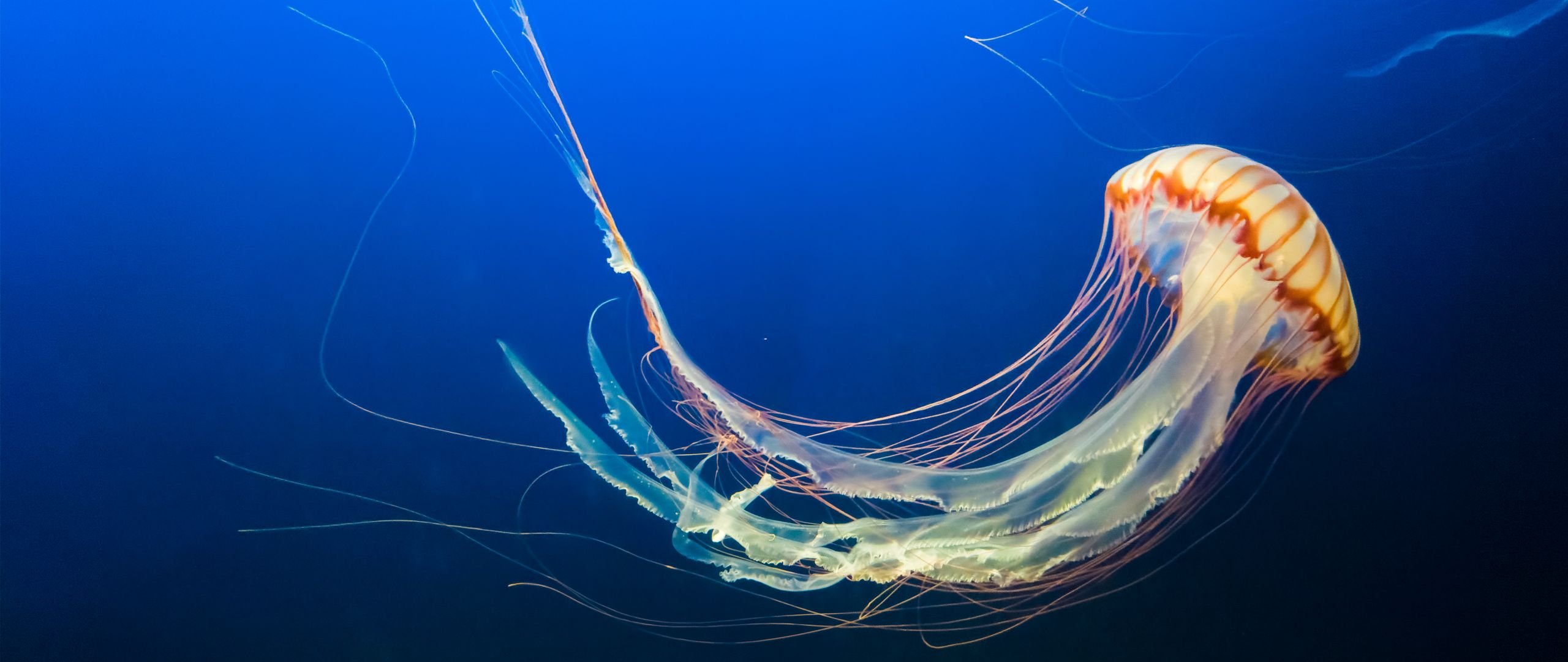
Why do jellyfish sting?
Jellyfish sting primarily as a defense mechanism and to capture prey. Their tentacles contain specialized cells called nematocysts, which fire tiny barbs loaded with venom when triggered by contact. This evolutionary adaptation helps jellyfish survive in their aquatic environment.
Recognizing Jellyfish Sting Symptoms
Identifying the symptoms of a jellyfish sting is crucial for proper treatment. The manifestation of symptoms can range from mild to severe, depending on factors such as the jellyfish species, the amount of skin affected, and individual sensitivity.
Common Jellyfish Sting Symptoms
- Burning or stinging sensation on the skin
- Tingling or numbness at the sting site
- Redness or purple discoloration of the affected area
- Visible welts or tracks on the skin
Severe Jellyfish Sting Symptoms
In some cases, jellyfish stings can lead to more severe reactions, including:
- Nausea and vomiting
- Dizziness
- Difficulty breathing
- Muscle spasms
- Weakness or fatigue
How quickly do jellyfish sting symptoms appear? Typically, the pain and burning sensation from a jellyfish sting are immediate. However, other symptoms may develop over the course of several hours.

Effective Treatments for Jellyfish Stings
Prompt and appropriate treatment of jellyfish stings is essential to alleviate pain and prevent potential complications. While the severity of the sting determines the extent of treatment required, there are several immediate steps one can take.
Immediate Relief Measures
- Rinse the affected area with salt water or hot water
- Remove any visible tentacles with tweezers
- Apply a hot compress or take a hot shower
- Avoid rubbing the sting site or applying fresh water
Why is hot water effective for jellyfish stings? Recent studies have shown that hot water treatment is more effective than ice packs in managing jellyfish stings. The heat helps to neutralize the venom and reduce pain.
Over-the-Counter Treatments
For additional relief, consider using:
- Topical painkillers like lidocaine
- Oral pain relievers such as ibuprofen
- Antihistamine creams for allergic reactions
Medical Interventions for Severe Reactions
In cases of severe reactions or stings from dangerous jellyfish species, medical intervention may be necessary. This can include:

- Administration of antivenin
- Intravenous fluids
- Respiratory support
- Cardiac monitoring
When should you seek emergency medical care for a jellyfish sting? If you experience severe symptoms such as difficulty breathing, chest pain, or signs of anaphylaxis, seek immediate medical attention.
Debunking Jellyfish Sting Treatment Myths
Several popular remedies for jellyfish stings have been circulating for years. However, not all of these treatments are effective, and some may even be harmful.
Ineffective or Harmful Treatments
- Urinating on the sting site
- Applying meat tenderizer
- Using vinegar (effective for some species, but not all)
- Rinsing with fresh water
Why is urinating on a jellyfish sting ineffective? Despite popular belief, there is no scientific evidence supporting the use of urine to treat jellyfish stings. This method is unsanitary and potentially harmful.
The Baking Soda Debate
Some people advocate for applying a baking soda paste to jellyfish stings. While this may provide some relief, its effectiveness is not conclusively proven. It’s generally safer to stick with scientifically-backed treatments like hot water rinses.

Prevention Strategies: Minimizing Jellyfish Encounters
While it’s impossible to completely avoid jellyfish in their natural habitat, there are several precautions you can take to reduce the risk of stings.
Before Swimming
- Check with local lifeguards about jellyfish activity
- Research jellyfish seasons in your area
- Avoid swimming during jellyfish blooms
- Consider wearing protective swimwear
While in the Water
- Shuffle your feet when entering shallow water
- Avoid swimming downwind in areas known for jellyfish
- Stay alert and watch for jellyfish in the water
How effective are jellyfish repellents? While some commercial products claim to repel jellyfish, their clinical effectiveness is largely unproven. It’s best to rely on physical barriers and awareness.
Understanding Different Jellyfish Species and Their Stings
Not all jellyfish stings are created equal. The severity of a sting can vary dramatically depending on the species involved. Understanding the different types of jellyfish and their potential dangers can help in assessing the risk and determining appropriate treatment.
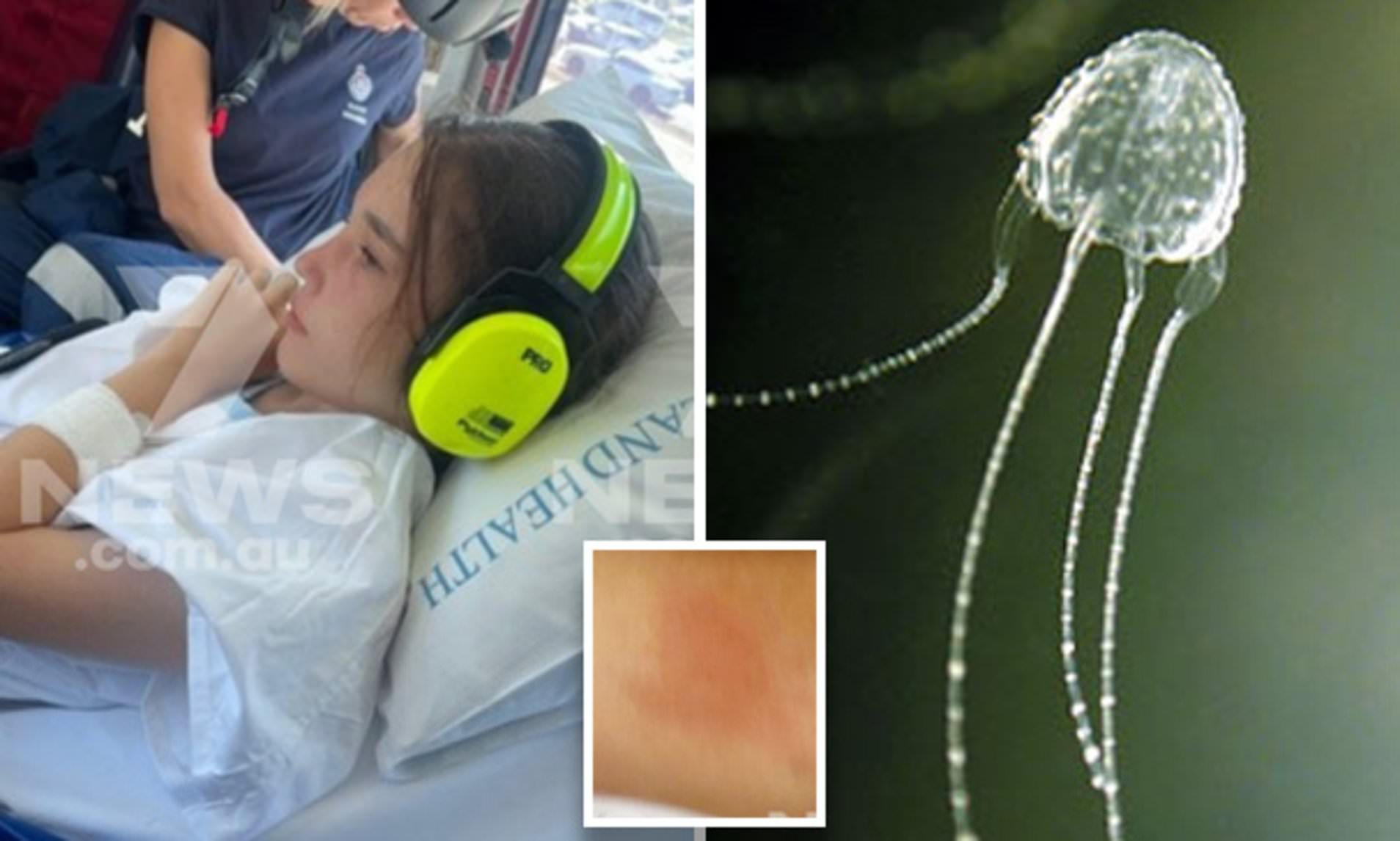
Common Jellyfish Species and Their Sting Severity
- Moon Jellyfish: Mild stings, rarely dangerous
- Sea Nettle: Moderate pain, can cause welts
- Lion’s Mane Jellyfish: Painful stings, can be severe
- Box Jellyfish: Extremely dangerous, potentially fatal
- Portuguese Man-of-War: Severe pain, can cause systemic reactions
Why are box jellyfish considered the most dangerous? Box jellyfish, particularly the Australian box jellyfish, possess one of the most potent venoms in the animal kingdom. Their stings can cause rapid cardiovascular collapse and death within minutes if left untreated.
Geographical Distribution of Dangerous Jellyfish
While jellyfish can be found in all oceans, some regions are known for higher concentrations of dangerous species:
- Northern Australia: Box jellyfish and Irukandji jellyfish
- Southeast Asia: Various box jellyfish species
- Mediterranean Sea: Portuguese Man-of-War
- Atlantic Ocean: Lion’s Mane jellyfish
Long-Term Effects and Complications of Jellyfish Stings
While most jellyfish stings resolve without long-term consequences, some cases can lead to prolonged effects or complications.

Potential Long-Term Effects
- Scarring at the sting site
- Hyperpigmentation of the skin
- Persistent pain or numbness
- Development of allergies to jellyfish venom
Rare Complications
In severe cases, particularly with highly venomous species, jellyfish stings can lead to:
- Irukandji syndrome: A potentially life-threatening condition caused by certain box jellyfish
- Delayed hypersensitivity reactions
- Neurological symptoms
- Cardiac arrhythmias
Can jellyfish stings cause long-term psychological effects? In some cases, individuals who have experienced severe jellyfish stings may develop anxiety or phobias related to ocean activities. Professional support may be beneficial in these situations.
The Role of Climate Change in Jellyfish Populations
Climate change is having a significant impact on marine ecosystems, including jellyfish populations. Understanding these changes is crucial for predicting and managing jellyfish encounters.
Climate Change Effects on Jellyfish
- Increased water temperatures favoring jellyfish reproduction
- Ocean acidification affecting marine food chains
- Changes in ocean currents influencing jellyfish distribution
- Reduced populations of jellyfish predators
Implications for Human-Jellyfish Interactions
The changing climate may lead to:

- More frequent jellyfish blooms
- Expansion of jellyfish habitats into new areas
- Increased likelihood of human-jellyfish encounters
- Potential for introduction of new, potentially dangerous species to certain regions
How is climate change affecting jellyfish migration patterns? Rising ocean temperatures are allowing some jellyfish species to expand their ranges, potentially introducing them to new areas where local populations may be unprepared for encounters.
Jellyfish Sting Research and Future Treatments
Scientific research into jellyfish venom and sting treatments is ongoing, with promising developments on the horizon.
Current Research Areas
- Venom composition and mechanisms of action
- Development of new antivenins
- Exploration of jellyfish venom for medical applications
- Improved detection and warning systems for jellyfish presence
Potential Future Treatments
Emerging research may lead to:
- More effective and targeted antivenins
- Novel pain management techniques
- Advanced protective gear for water activities
- Improved methods for neutralizing nematocysts
Could jellyfish venom have medical benefits? Interestingly, some components of jellyfish venom are being studied for potential medical applications, including pain management and cancer treatment.

As our understanding of jellyfish and their stings continues to evolve, so too will our ability to prevent, treat, and manage these marine encounters. By staying informed about jellyfish species, their habitats, and proper treatment protocols, we can better enjoy our oceans while minimizing the risks associated with these fascinating creatures.
Jellyfish Sting: Symptoms, Treatments, and More
Jellyfish sting symptoms
Jellyfish are a common sea creature found in every ocean. There are many species of jellyfish, all of them with tentacles. Some carry poisonous venom in their tentacles as a method of self-defense against predators. It’s this venom that makes a jellyfish sting so painful.
Most types of jellyfish stings will cause some discomfort, but some can be life-threatening. According to the National Science Foundation, over 500,000 people are stung by jellyfish every year in North America’s Chesapeake Bay alone.
Common symptoms of a jellyfish sting include:
- a burning, stinging sensation on your skin
- a tingling or numbness where the sting occurred
- the skin in the area where the jellyfish stung turning red or purple
More severe symptoms of a jellyfish sting include:
- nausea
- dizziness
- vomiting
- difficulty breathing
The severity of your symptoms will depend on what kind of jellyfish you encountered, and how much of your skin is affected by its venom.
Treatment for jellyfish stings mainly revolves around pain relief or healing allergic reactions if they occur.
Immediate relief treatment
Most jellyfish stings can be treated right away with a salt water or hot water rinse. This will help decrease the burning sensation from the sting. It may also help to take a hot shower as soon as possible. A recent study concluded that jellyfish stings are treated more effectively by hot water than by ice packs.
Over-the-counter medicines
If you’re in a lot of pain, you can try applying a topical painkiller such as lidocaine (LMX 4, AneCream). A pain reliever such as ibuprofen (Advil) could also lessen the effect of the sting.
You may find out you are allergic to jellyfish stings after you’ve been stung by one. If you’re having an allergic reaction, such as hives, an over-the-counter antihistamine cream will help bring relief.
Home remedies
Some people believe that applying a baking soda paste to the sting area will soothe their skin and draw out the jellyfish’s venom. Vinegar is also a popular remedy for jellyfish stings. But the effectiveness of both of these remedies is inconclusive. Using a vinegar rinse may help in the case of some jellyfish species, but not others.
Vinegar is also a popular remedy for jellyfish stings. But the effectiveness of both of these remedies is inconclusive. Using a vinegar rinse may help in the case of some jellyfish species, but not others.
Medicines for severe reactions
A reaction to a more dangerous species of jellyfish will need to be treated with antivenin. This is a special drug formulated to combat the venom of a specific breed of animal. Antivenin for jellyfish stings can only be found in hospitals.
It’s a popular belief that human urine can be used to treat a jellyfish sting. This has never been proven. Human urine isn’t a sanitary medical treatment, and there is no need to resort to trying it. Treating the area of your sting with salt water from the ocean or a hot water rinse is a much better and more effective method of treatment.
Meat tenderizer, a popular remedy, also shouldn’t be used, as it can cause damage to tissue.
Don’t rub the area where your skin has been stung for several hours afterward, and avoid getting sand near the wound.
Rinsing with cold, fresh water might seem like a good idea, but it could activate more jellyfish stingers if there are still some in your skin. Opting for a hot shower instead will help rinse the stingers out without making the sting worse.
Certain bodies of water are known to contain large numbers of jellyfish, called blooms. Swimming in bodies of water where blooms of jellyfish are known to be increases your chance of getting stung.
Swimming downwind also makes getting stung more likely, as jellyfish travel with the current. People who fish, dive, or go boating in deep waters are all more likely to get jellyfish stings. Same goes for people who scuba dive without protective equipment and people who surf.
Any time you swim in an ocean, you’re visiting the natural habitat of the jellyfish. There is always a chance you may encounter a jellyfish, but you can take steps to make getting stung less likely.
When you arrive at a beach, speak with the lifeguard on duty about what types of jellyfish have been seen in the area and if people have been reporting stings that day. Jellyfish move in patterns, riding currents, and are more common during certain times of the year. You may wish to avoid swimming in areas with high jellyfish populations altogether.
Jellyfish move in patterns, riding currents, and are more common during certain times of the year. You may wish to avoid swimming in areas with high jellyfish populations altogether.
Wearing a protective bodysuit in the water will reduce your chances of being stung.
When wading in shallow water, shuffle your feet and walk slowly to disturb the sand and avoid catching a jellyfish by surprise.
Although they’re beautiful and interesting to look at, you should never pick up a jellyfish that has washed up on the beach. Even dead jellyfish can deploy venom from their tentacles.
Commercial products are available that claim to reduce the odds of jellyfish stings, although their clinical benefit is largely unknown.
Most jellyfish stings won’t have any long-term effect on your health. If you’re stung by a jellyfish and start to feel dizzy or nauseous, pay close attention. Jellyfish sting symptoms, especially from more dangerous species, can escalate quickly. If you lose feeling in the limb that was stung, have difficulty breathing, or experience heart palpitations after being stung, go to the emergency room. Being stung by a jellyfish in an area known to have dangerous breeds such as lion’s mane and box jellyfish, is also cause for concern. As well, if you’re stung by a jellyfish multiple times, you should see a doctor.
Being stung by a jellyfish in an area known to have dangerous breeds such as lion’s mane and box jellyfish, is also cause for concern. As well, if you’re stung by a jellyfish multiple times, you should see a doctor.
Jellyfish stings Information | Mount Sinai
Jellyfish are sea creatures. They have nearly see-through bodies with long, finger-like structures called tentacles. Stinging cells inside the tentacles can hurt you if you come in contact with them. Some stings can cause serious harm. Almost 2000 species of animals found in the ocean are either venomous or poisonous to humans, and many can produce severe illness or fatalities.
This article is for information only. DO NOT use it to treat or manage a jellyfish sting. If you or someone you are with is stung, call your local emergency number (such as 911), or your local poison center can be reached directly by calling the national toll-free Poison Help hotline (1-800-222-1222) from anywhere in the United States.
Poisonous Ingredient
Jellyfish venom
Where Found
Types of potentially harmful jellyfish include:
- Lion’s mane (Cyanea capillata).

- Portuguese man-of-war (Physalia physalis in the Atlantic and Physalia utriculus in the Pacific).
- Sea nettle (Chrysaora quinquecirrha), one of the most common jellyfish found along the Atlantic and Gulf coasts.
- Box jellyfish (Cubozoa) all have a box-like body or “bell” with tentacles extending from each corner. There are over 40 species of box jellies. These range from nearly invisible thimble-sized jellyfish to basketball-sized chirodropids found near the coasts of northern Australia, Thailand, and the Philippines (Chironex fleckeri, Chiropsalmus quadrigatus). Sometimes called “sea wasps,” box jellyfish are highly dangerous, and more than 8 species have caused deaths. Box jellyfish are found in the tropics including Hawaii, Saipan, Guam, Puerto Rico, the Caribbean, and Florida, and recently in a rare event in coastal New Jersey.
There are also other types of stinging jellyfish.
If you are unfamiliar with an area, be sure to ask local ocean safety staff about the potential for jellyfish stings and other marine hazards. In areas where box jellies may be found, especially at sunset and sunrise, full body coverage with a “stinger suit,” hood, gloves, and booties is advised.
In areas where box jellies may be found, especially at sunset and sunrise, full body coverage with a “stinger suit,” hood, gloves, and booties is advised.
Symptoms
Symptoms of stings from different types of jellyfish are:
LION’S MANE
- Breathing difficulty
- Muscle cramps
- Skin burning and blistering (severe)
PORTUGUESE MAN-OF-WAR
- Abdominal pain
- Changes in pulse
- Chest pain
- Chills
- Collapse (shock)
- Headache
- Muscle pain and muscle spasms
- Numbness and weakness
- Pain in the arms or legs
- Raised red spot where stung
- Runny nose and watery eyes
- Swallowing difficulty
- Sweating
SEA NETTLE
- Mild skin rash (with mild stings)
- Muscle cramps and breathing difficulty (from a lot of contact)
SEA WASP OR BOX JELLYFISH
- Abdominal pain
- Breathing difficulty
- Changes in pulse
- Chest pain
- Collapse (shock)
- Headache
- Muscle pain and muscle spasms
- Nausea and vomiting
- Pain in the arms or legs
- Raised red spot where stung
- Severe burning pain and sting site blistering
- Skin tissue death
- Sweating
For the great majority of bites, stings, or other forms of poisoning, the danger is either drowning after being stung or an allergic reaction to the venom.
Home Care
Seek medical help right away. Get medical attention right away if pain increases or there are any signs of breathing difficulty or chest pains.
- As soon as possible, rinse the sting site with large amounts of household vinegar for at least 30 seconds. Vinegar is safe and effective for all types of jellyfish stings. Vinegar rapidly halts the thousands of tiny unfired stinging cells left on the surface of the skin after tentacle contact.
- If vinegar is not available, the sting site can be washed with ocean water.
- Protect the affected area and do NOT rub sand or apply any pressure to the area or scrape the sting site.
- Soak the area in 107°F to 115°F (42°C to 45°C) standard tap hot water, (not scalding) for 20 to 40 minutes.

- After soaking in hot water, apply antihistamine or steroid creams such as cortisone cream. This can help with pain and itching.
Before Calling Emergency
Have this information ready:
- Person’s age, weight, and condition
- Type of jellyfish, if possible
- Time the person was stung
- Location of the sting
Poison Control
Your local poison control center can be reached directly by calling the national toll-free Poison Help hotline (1-800-222-1222) from anywhere in the United States.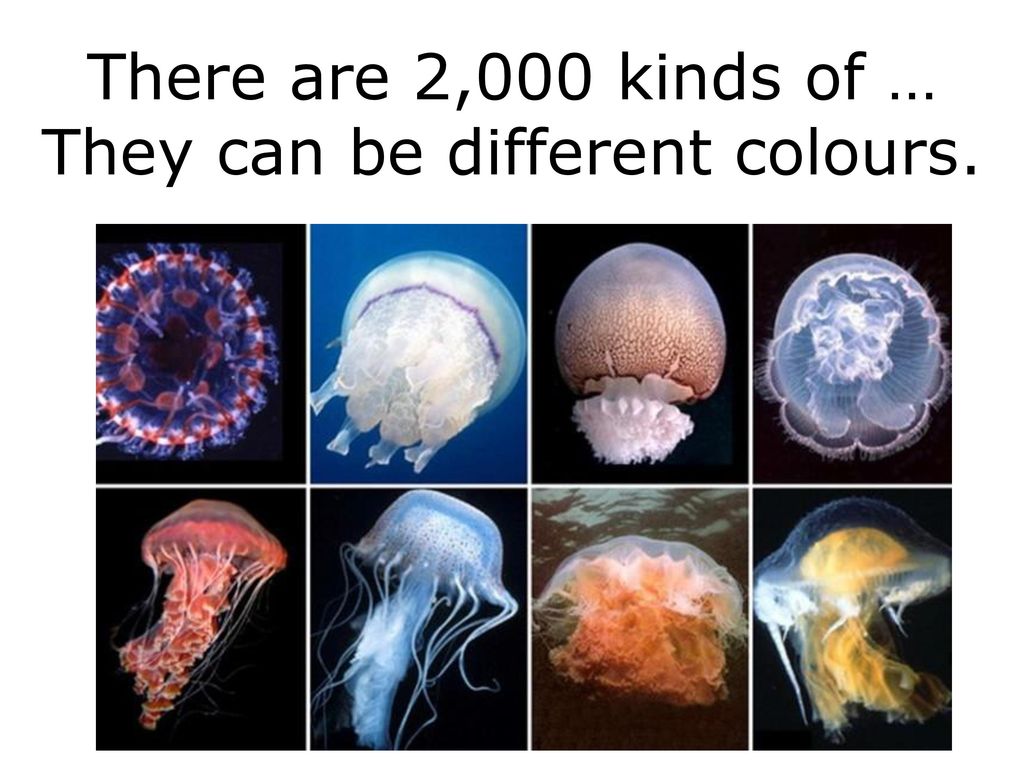 This national hotline will let you talk to experts in poisoning. They will give you further instructions.
This national hotline will let you talk to experts in poisoning. They will give you further instructions.
This is a free and confidential service. All local poison control centers in the United States use this national number. You should call if you have any questions about poisoning or poison prevention. It does NOT need to be an emergency. You can call for any reason, 24 hours a day, 7 days a week.
What to Expect at the Emergency Room
The health care provider will measure and monitor the person’s vital signs, including temperature, pulse, breathing rate, and blood pressure. Symptoms will be treated. The person may receive:
- Antivenin, a medicine to reverse the effects of the venom, may be used for one specific box jelly species found only in certain areas of the Indo-Pacific (Chironex fleckeri)
- Blood and urine tests
- Breathing support, including oxygen, a tube through the mouth into the throat, and breathing machine
- Chest x-ray
- ECG (electrocardiogram, or heart tracing)
- Fluids through a vein (by IV)
- Medicine to treat symptoms
Outlook (Prognosis)
Most jellyfish stings improve within hours, but some stings can lead to skin irritation or rashes that last for weeks. Contact your provider if you continue to have itching at the sting site. Topical anti-inflammatory creams may be helpful.
Contact your provider if you continue to have itching at the sting site. Topical anti-inflammatory creams may be helpful.
Portuguese man-of-war and sea nettle stings are rarely deadly.
Certain box jellyfish stings can kill a person within minutes. Other box jellyfish stings can lead to death in 4 to 48 hours after a sting due to “Irukandji syndrome,” a delayed reaction to the sting.
It is important to carefully monitor box jellyfish sting victims for hours after a sting. Seek medical attention right away for any breathing difficulties, chest or abdominal pains, or profuse sweating.
Feng S-Y, Goto CS. Envenomations. In: Kliegman RM, St. Geme JW, Blum NJ, Shah SS, Tasker RC, Wilson KM, eds. Nelson Textbook of Pediatrics. 21st ed. Philadelphia, PA: Elsevier; 2020:chap 746.
Otten EJ. Venomous animal injuries. In: Walls RM, Hockberger RS, Gausche-Hill M, eds. Rosen’s Emergency Medicine: Concepts and Clinical Practice. 9th ed. Philadelphia, PA: Elsevier; 2018:chap 55.
Rosen’s Emergency Medicine: Concepts and Clinical Practice. 9th ed. Philadelphia, PA: Elsevier; 2018:chap 55.
Scerri L. Jellyfish stings. In: Lebwohl MG, Heymann WR, Coulson IH, Murrell DF, eds. Treatment of Skin Disease: Comprehensive Therapeutic Strategies. 6th ed. Philadelphia, PA. Elsevier; 2022:chap 116.
Last reviewed on: 7/20/2021
Reviewed by: Jesse Borke, MD, CPE, FAAEM, FACEP, Attending Physician at Kaiser Permanente, Orange County, CA. Also reviewed by David Zieve, MD, MHA, Medical Director, Brenda Conaway, Editorial Director, and the A.D.A.M. Editorial team.
Jellyfish sting: symptoms, consequences, first aid
Jellyfish bite: symptoms, consequences, first aid – KAMA online store blog
Online store of dressings
Your personal account
Basket
Cart is empty
0){ %>
Total:
8 (800) 55 16 163
Mon-Fri from 10:00 to 20:00 (pickup until 17:00)
Expert advice
- home
- Featured Articles
- Jellyfish Sting: First Aid
– Where is the summer? we ask every day.
– Wait! – the Hydrometeorological Center answers us every day.
But August is coming to an end and many, not wanting to wait, go straight to the sea, the sun and warmth… can become a subject of discussion among friends. Not every holiday romance is able to leave such vivid impressions!
Jellyfish are one of the most unusual and ancient creatures on earth. They have lived on Earth for about 600 million years, and their appearance has not changed much during this time. As before, jellyfish are 98% water.
In general, the word “jellyfish” was first used by K. Linnaeus. In 1752 he drew attention to how similar these animals are to the descriptions of the head of the representative of Greek mythology, the Gorgon Medusa. Since then, these “cute” creatures have become known as jellyfish.
Jellyfish can be simply huge: over 2 meters in diameter, and the length of the tentacles can reach 40 meters!
Box jellyfish – Australian wasp
The most poisonous of all known jellyfish is the “Australian wasp”, it can kill 60 people at the same time. This deadly jellyfish lives in the waters of Australia and Indonesia. Fortunately, most Russians are not in danger of meeting her.
This deadly jellyfish lives in the waters of Australia and Indonesia. Fortunately, most Russians are not in danger of meeting her.
For lovers of the coasts of the Thai Kingdom, there is a high chance to stumble upon the “Portuguese boat”. Moreover, this is not one jellyfish, but a compact colony of individuals with a large number of translucent and completely invisible tentacles in the water, the length of which in the straightened state reaches 50 meters. “Portuguese Boat” is found in the Pacific and Indian Oceans, less often in the Mediterranean Sea. According to its toxic effect, the impact of its goads can be compared with the bite of a poisonous snake.
And yet, most of us first saw jellyfish swimming in the Black Sea, visiting children’s holiday camps, visiting camp sites or “savages” with their parents. There are three varieties of jellyfish in the Black Sea, each of which has its own characteristics. The most dangerous of the Black Sea jellyfish is the cornerot, which is also called the “Blue Jellyfish” for its unusual appearance.
Cornerot – blue jellyfish
He first paralyzes the fish with poison, and then calmly eats them. This is the most dangerous jellyfish in the Black Sea. From her burn, swelling and red stripes appear on her skin. The remaining two species: “Aurelia” and “Mnemiopsis” do not pose a serious danger to humans, although we most often meet them in the midst of the Black Sea swimming season.
What to do if bitten by a snake?
read
How does jellyfish venom work?
The jellyfish has special nematocyte cells, inside of which there is a capsule, and in it a hollow thread twisted in the form of a spiral. When a jellyfish touches a prey, the coil shoots like a harpoon, attaches to the skin and injects a nerve agent into the body through it. Upon contact with the tentacles, it is highly likely that cells containing poison may remain on the skin, which continues to act even after contact with the jellyfish has ceased.
Depending on the species you encountered at the resort and the size of the jellyfish, the burn may manifest itself in different ways. Sometimes symptoms appear within about an hour after the lesion, sometimes within minutes.
Sometimes symptoms appear within about an hour after the lesion, sometimes within minutes.
- The first thing that appears are uneven spots, stripes, the color of which can be either pale pink or intense red.
- Injured areas of the skin become hot to the touch.
- Then a rash or fluid-filled blisters appear.
Usually everyone is startled by the rapidly developing swelling of the soft tissues, almost a horror movie in reality.
At the same time, the skin reacts to contact with a jellyfish with a growing sensation of burning and itching, then severe pain appears and the general condition worsens: nausea, vomiting, dizziness (sometimes up to loss of spatial orientation), headache. Sweating intensifies, ripples in the eyes. There is a feeling of shortness of breath, fear of death.
What to do if stung by a jellyfish?
- Get out of the water immediately, especially if you are swimming far from the shore, in deep water.

- Once on land, you need to take a good look at yourself: if there are sections of jellyfish filaments or fragments of tentacles, you should try to wash them off with sea water or scrape them off with improvised means – in no case with your bare hands, otherwise they will continue to affect you.
- Do not use fresh water, otherwise the remnants of the tentacles will release toxins again, causing a second burn. To clean the skin, you can use any mechanical means (from bank credit cards and razors to napkins and cotton swabs). You can significantly reduce the pain of a jellyfish burn if cold objects are applied to the affected area.
Jellyfish burn on the arm
When the first shock passes, the question arises of how to treat the burns.
How to treat the burn area
Many people recommend vinegar, weak alcohol, some even urine. Let’s take a look at the last two options.
But vinegar, usually apple, was previously recommended by all medical luminaries, since vinegar really neutralizes the poison of jellyfish, but as it turned out, not all types, because. Their poison is varied: some contain more acid, others alkali.
Their poison is varied: some contain more acid, others alkali.
Therefore, if you have vinegar in your hands and you do not know which jellyfish met you, start treatment with a small area of the affected skin. If the pain has intensified – stop, if the pain and itching have receded, then it means that you did everything right.
Of course, when the skin is damaged by a jellyfish, inflammation can develop, especially in hot countries where you can’t find the well-known Levomekol ointment in pharmacies, but it’s very possible to purchase proven antiseptics, such as Prontosan or Octenisept. A small spray bottle of Octenisept 50ml can be taken with you on a trip as a universal antiseptic.
Immediately after treating the skin, start drinking plain fresh water in large quantities – it will gradually remove toxins and weaken their effect. And antihistamines will help reduce itching.
When the jellyfish-affected skin begins to recover, the use of creams with a calming and healing effect will help. For example, Tamu-Tamu Children’s cream with tamanu oil relieves local inflammation, soothes and softens the skin, and improves regeneration. Grab a jar of this cream 10g on vacation and it will help you out more than once!
For example, Tamu-Tamu Children’s cream with tamanu oil relieves local inflammation, soothes and softens the skin, and improves regeneration. Grab a jar of this cream 10g on vacation and it will help you out more than once!
How to use Prontosan correctly.
read
What absolutely can not be done with a jellyfish sting?
- Rubbing and itching, even if itching seems unbearable.
- Lubricate the damaged surface with creams, oils or lotions in the first hours after injury.
- Irrigate the inflamed area with iodine and brilliant green and other alcohol-containing products.
DO NOT!
And advice to parents: do not set a bad example for children. Do not offer them to touch the jellyfish, even if it has already died or just washed ashore – it happens that even in this state, its tentacles are still able to sting. Explain that despite their unusual appearance, the jellyfish is a dangerous marine predator that can be very unpleasant to meet.
Products mentioned in the article:
Need more information?
Ask an expert!
Borisov Valery Sergeevich
Surgeon-combustiologist, candidate of medical sciences, senior researcher.
In your shopping cart
goods
Order amount: 0 rub
Checkout
Information
Article reading time:
5 min
Author:
Borisov Valeriy Sergeevich. Surgeon-combustiologist, candidate of medical sciences, senior researcher
Recommended articles
Doctor’s advice
First aid
Treatment of acute wounds
Burn treatment
Skin care
Treatment of trophic ulcers
Personal experience
Treatment of bedsores
KAMA news
rare diseases
Epidermolysis bullosa
Treatment of diabetic foot
Success
Your message has been sent successfully.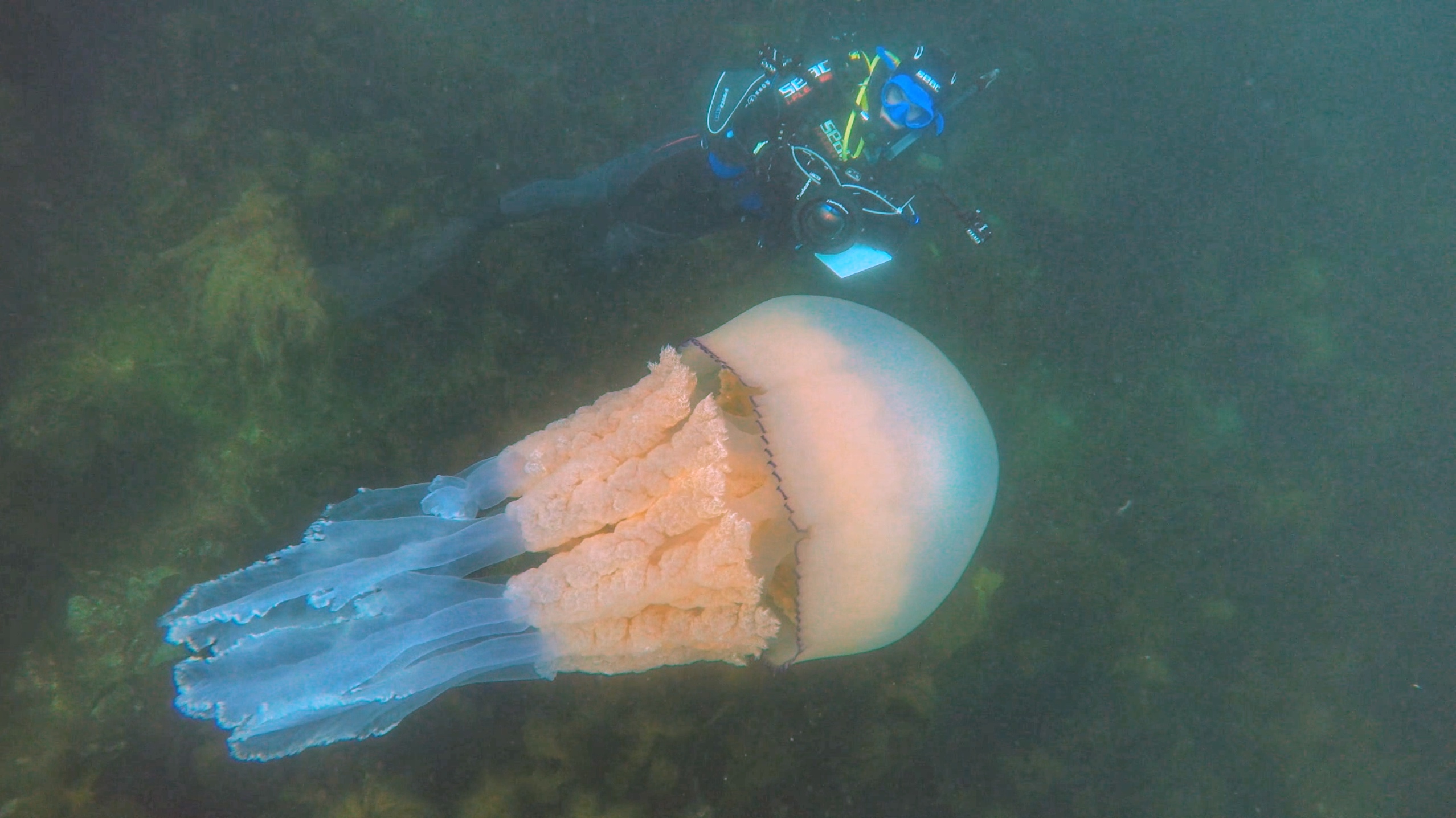 A response will be sent to your email address within 24 hours
A response will be sent to your email address within 24 hours
Back to article
Please enable JavaScript in your browser!
One-click order
Name:
Phone:
Consent to the offer agreement and the processing of personal data
I hereby confirm that I have read the offer agreement and accept the conditions described therein. I confirm my consent to the processing and storage of my personal data in accordance with the privacy policy and accept the conditions described in it.
Comment:
Watch out for jellyfish! Providing first aid in case of a jellyfish sting
Residents of Vladivostok, with the onset of stable warm weather, rush to the sea coast, where in August and September cross jellyfish intensify their activity. The poisonous cross jellyfish (scientific name is goneonema) refers to the so-called stinging intestinal animals, which are characterized by the presence of stinging “nettle” cells in them.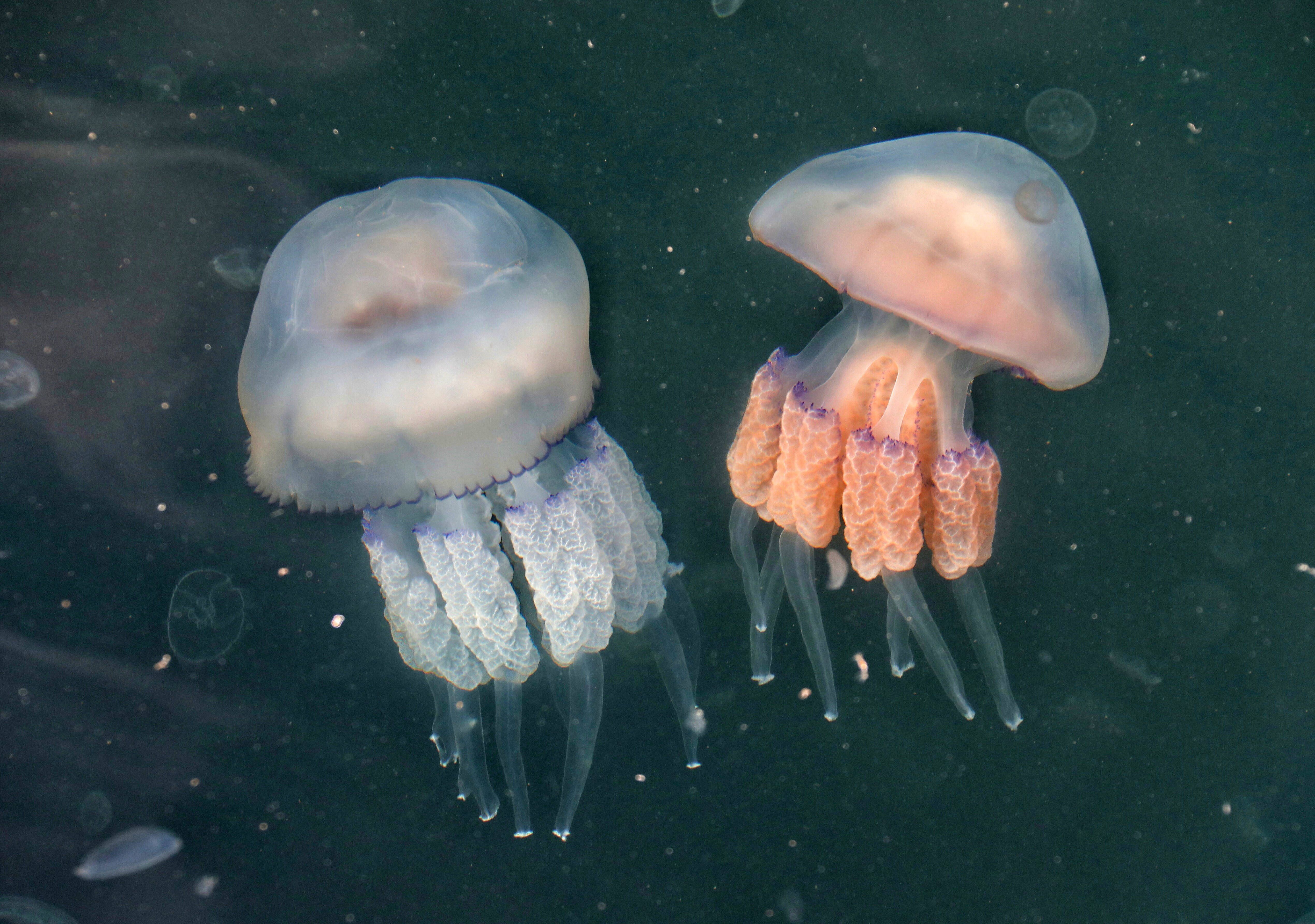 These cells contain a poisonous liquid, which, when it gets on the skin of a person, has a “burning” effect, causing a strong reaction in the body.
These cells contain a poisonous liquid, which, when it gets on the skin of a person, has a “burning” effect, causing a strong reaction in the body.
It is easy to recognize the cross jellyfish: inside the transparent body, a cruciform pattern is visible, formed by painted internal organs. Along the edges of the umbrella there are about 60 thin tentacles with clusters of stinging cells. It is in contact with them that a person gets burned. Cross jellyfish usually stay in shallow water. Their favorite places are thickets of sea grass. Here they swim and hang on the blades of grass, attached with their suckers. Sometimes they come across in clear water, but usually not far from thickets of sea grass. During the rains, when the sea water off the coast is significantly desalinated, the jellyfish die. In windy weather, when the sea is restless, jellyfish sit out in the thickets of grass near the bottom. Early in the morning and in the evening they are more active.
At the moment of the “bite”, the bather feels a strong burning sensation, after a few minutes the skin at the site of the touch of the tentacle turns red, sometimes covered with blisters. Feeling a “burn”, you must immediately get out of the water, because after 10-15 minutes weakness sets in, squeezing chest pain, shortness of breath, nausea.
Feeling a “burn”, you must immediately get out of the water, because after 10-15 minutes weakness sets in, squeezing chest pain, shortness of breath, nausea.
In order to minimize the possibility of contact with jellyfish, it is recommended to inspect the surface of the water before swimming. If you spot algae or jellyfish fragments, play it safe.
It is best to always remember the rules of first aid for a jellyfish who has been burned, so as not to end up in a situation where you do not know what to do. A jellyfish sting can be one of the most incredibly painful stings you will ever experience. The severity of the condition depends on the location of the “burn” of the jellyfish. The most severe consequences are caused by jellyfish in the area of the upper third of the body, shoulders, neck, head, and chest. One good news is that these bites are extremely rarely life threatening.
If you get bitten by a cross, you don’t have to worry. It is necessary to get out of the water and sit in the shade, remove the remaining mucus and wash the burn area with fresh water, preferably with soap. This is done in order to remove the remaining mucus.
This is done in order to remove the remaining mucus.
If you only have one bite, take a painkiller and antihistamine tablet (analgin and diphenhydramine from the car kit), but don’t count on a 100% effect.
Drink plenty of fluids.
It is better to spend the first day after a burn at home. To relieve body aches, you can take a contrast shower.
You can contact the Clinic on Komarova, where you will be provided with qualified assistance using special preparations. It is imperative to consult a doctor if you are unlucky and have more than one burn on your soul. Such pain is almost impossible to endure and the help of a doctor is needed to alleviate it. Qualified medical assistance is also required if you have hypertension or other diseases of the cardiovascular system, bronchial asthma.
But what you should not do after gonionema is trying to “treat” with alcohol. Drinking alcohol will increase the symptoms and make the next day very difficult.